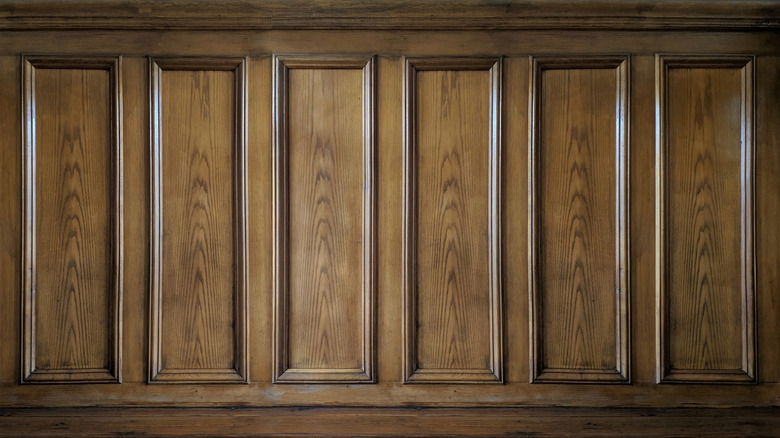Erin Napier Ditches A Once-Popular Trend To Take A Dark Room From Dated To Elevated
Erin Napier's interior design style is known for celebrating a home's original architectural features, which most often means keeping woodwork intact. There are exceptions, however. In an episode of "Home Town," neither the home renovation specialist nor her client wanted anything to do with the dark synthetic wood paneling cladding the living room walls of a 1962 three-bedroom property.
Wood paneling may be coming back in style as designers and homeowners look to increase the coziness and warmth of interiors. It also helps foster a connection to nature through such organic materials, but only if it doesn't bring down the room's mood. In this instance, the paneling felt oppressive and sucked the light out of the room. Napier decided it was best to get rid of it entirely, replacing it with brighter, airier drywall painted a soft off-white that perfectly reflected the natural light coming in from large windows on both sides of the newly refreshed open space.
When it's best to get rid of wood paneling
Wood paneling can be polarizing. It was once so ubiquitous that early 21st-century homebuyers wanted nothing to do with it, eager to distance themselves from any design style reminiscent of the overly ornate homes they might have grown up in. Recently, trends have shifted away from overly clean lines and all-white interiors. Instead, homeowners favor historical or character-rich architectural detailing that can make living spaces feel more unique, like wood paneling. So, if your fixer-upper happens to have this distinctive feature on its walls, how do you decide whether to keep it or remove it?
Following Erin Napier's lead, ditch the paneling when it's making the space look dark and drab. All-around wood paneling in rooms with reduced natural light can feel quite claustrophobic. You're better off bleaching or lime-washing the wood to give it a lighter stain, painting it a bright, elegant color, or removing it altogether. For a more measured approach, dark wood paneling can be the outdated design trend that's actually perfect for your accent wall. Keeping this decorative cladding to a minimum in a delineated area, such as behind a fireplace, will honor your property's original architecture, all while modernizing the space to suit your taste.
With that said, one of Napier's best tips for keeping a home historically accurate during a renovation is to maintain and restore any wall paneling that is made from solid wood or features intricate craftsmanship. This type of woodwork has become so rare in properties today that it should be preserved, not destroyed.

